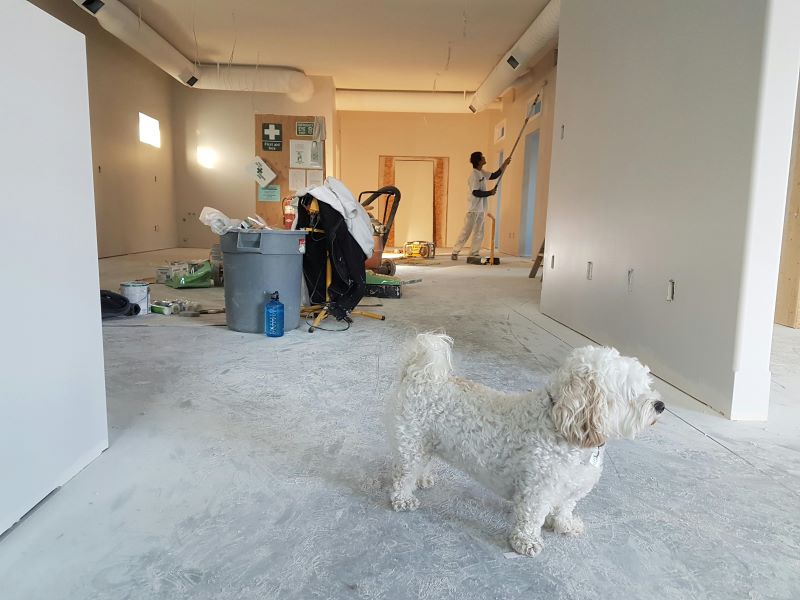Ever torn out a kitchen backsplash on a Saturday morning only to realize by noon that you have no idea what goes behind it, under it, or what to do next? Across California, DIY home improvement has become a way to push back against high contractor rates and long waitlists. It feels empowering—until you’re knee-deep in a bathroom remodel you thought would only take a weekend.
In this blog, we will share the most common beginner mistakes during home improvement projects and how to avoid them.
Ignoring the Systems That Actually Keep You Comfortable
Cosmetic fixes tend to get all the attention. Paint, trim, tile—these are the “fun” parts that show up in before-and-after photos. What doesn’t show up are the behind-the-wall systems: HVAC, plumbing, wiring. These are the unsung heroes that make a home actually work. And beginners often overlook them, until something goes wrong.
Nowhere is this more obvious than with air conditioning. People remodel an entire home and keep an old, underpowered AC unit because it “still works,” only to suffer through peak summer temperatures. Or worse, they install new insulation, seal every draft, and then realize the air circulation is totally off. Good airflow isn’t about a cold blast in July—it’s about year-round balance and efficiency. And if something’s off, you’re better off dealing with it early than sweating it out in a sealed oven of a house.
If you’re serious about comfort, and especially if you’re mid-project and unsure why rooms aren’t cooling evenly, find the best AC repair company in Modesto, CA and ask the questions you’ve been avoiding. A solid technician can evaluate your ducts, inspect your unit, and let you know if your system is too old or too small. Fixing this before you put in drywall and finish paint can save you thousands and keep your space actually livable—not just pretty on a screen.
Rushing In Without a Blueprint
Many beginners approach their first big project with more energy than strategy. They start with demolition, excited by the noise and motion, without mapping out the next step. That first swing of a hammer can feel like progress, but without a clear roadmap, it’s just expensive destruction. Good planning isn’t optional. It keeps you from making decisions backward—like picking appliances after the cabinets are already installed, or realizing mid-demo that the wall you just removed was structural.
Planning isn’t just listing the end goal. It’s understanding each phase, what it requires, how long it will take, and what it depends on. Laying tile? You’ll need a level subfloor, proper underlayment, and the right curing time. Swapping lighting? You better know where your wiring runs, what’s on the circuit, and if your electrical box can even support the fixture. Jumping into a remodel without blueprints, whether literal or mental, sets the stage for delays, extra costs, and one too many runs to the hardware store.
Overconfidence with Tools and Zero Margin for Error
Beginner DIYers often think tools are the answer to inexperience. If you don’t know how to build something straight, a laser level will do the thinking for you. If you’ve never cut wood, a miter saw will make it easy. In reality, tools magnify your skill level. They don’t fix it. The result is usually uneven cuts, misaligned pieces, and way too many extra holes in the wall.
Before grabbing the biggest power tool at the store, take time to understand the basics. How does the material respond to cuts? How will the finish hold up? What’s the grain direction? Practice cuts on scrap wood. Run test strips of tile. Dry-fit parts before applying adhesive. Mistakes caught early are cheap. Mistakes sealed behind grout or glued under pressure are permanent.
Also, know when to stop. Pushing through fatigue or frustration leads to sloppy work and accidents. The hammer swing gets heavier. The measurements get looser. When your eyes blur and you’re telling yourself “just one more,” step back. Take a break before the project takes control.
Underestimating Material Behavior
Most people think once a wall is painted or a floor is laid, the job is done. But materials behave differently in real-world conditions. Wood expands and contracts with humidity. Paint looks one color under artificial light and another in daylight. Thin tile cracks if the surface underneath isn’t properly prepared. These aren’t edge cases—they’re everyday realities.
Beginners often skip acclimation. They’ll install flooring straight out of the box, unaware that hardwood needs 48–72 hours in the room to adjust to temperature and moisture. They’ll prime and paint without checking for moisture in the drywall, or apply caulk without realizing it’s incompatible with their paint. None of these steps feel important until the floor buckles or the paint bubbles six weeks later.
Material choices should be about more than looks. Ask how it wears, how it reacts to temperature swings, and what kind of prep it needs. Read the labels, ask at the store, check online forums. There’s no excuse for being surprised when materials behave exactly the way they were designed to.
Assuming DIY Means Do It Alone
It’s easy to think asking for help ruins the point of doing it yourself. But isolation is where mistakes multiply. No one to double-check measurements. No one to spot errors before they’re locked in. No one to tell you that, yes, that beam you want to remove actually holds up the ceiling.
Whether it’s a friend who knows carpentry, a neighbor with the right drill bit, or a professional consultant for a few hours, outside help can be the most valuable resource. Not because you’re incapable, but because the cost of one uninformed decision can wipe out your whole budget. Collaboration doesn’t take away your DIY badge. It just saves you from rebuilding the same wall twice.
In the end, most beginner mistakes come from enthusiasm unchecked by experience. That’s not a flaw. That’s a phase. Every skilled contractor started out with crooked shelves and mismatched screws. What separates the ones who improve is not perfection—it’s learning from the parts that didn’t work, fixing what you can, and knowing when to ask for a better way forward.


